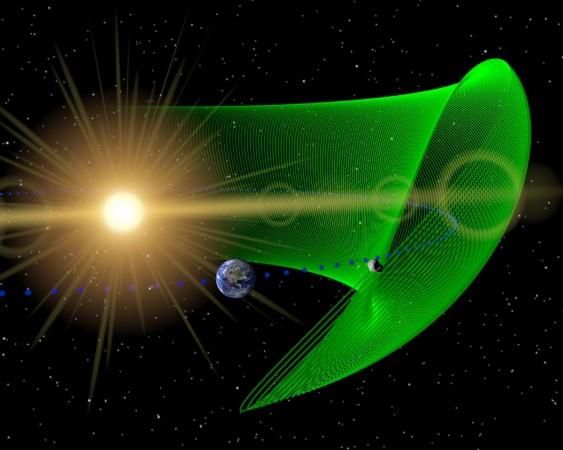![Atlas V rocket takes flight in 2016, carrying NASA's OSIRIS-REx spacecraft to sample an asteroid. [Representational image] nasa, OSIRIS-REx spacecraft,](https://data1.ibtimes.co.in/en/full/634942/nasa-osiris-rex-spacecraft.jpg?h=450&l=50&t=40)
NASA's asteroid study and sample return mission -- OSIRIS-REx (Origins, Spectral Interpretation, Resource Identification, Security-Regolith Explorer) -- was launched in September 2016 to study asteroid 101955 Bennu, a carbonaceous asteroid, and return a sample to Earth in 2023 for detailed analysis. The spacecraft is also assigned the task to discover other space rocks that accompany Earth while it orbits around the Sun -- known as Trojan asteroids.
Also Read: NASA, ISS slammed for allegedly covering-up UFO sightings AGAIN! [VIDEOS]
This spacecraft was launched on September 8, 2016, from the Cape Canaveral Air Force Station in Florida. Around 10 days are allotted to the spacecraft for Trojan asteroid hunting.
Starting from February 9, this mission will end on February 20 with two days off due to spacecraft thermal issues.

So far, only one Earth Trojan asteroid has been discovered by scientists. It was in 2010. The asteroid was found by NASA's infrared WISE (Wide-field Infrared Survey Explorer) telescope.
Dubbed 2010 TK-7, this Earth Trojan asteroid is 304.8 meters wide (1000 feet) and orbits around 60 degrees ahead of Earth. In the asteroid-hunting mission, Osiris-Rex will search for Trojan space rocks 60 degrees ahead and behind Earth. Such regions are an almost stable point known as Lagrange points.
"Lagrange points, are among several locations where the gravitational tug-of-war between Earth and the sun balances out, making for potentially stable orbits for asteroids or other objects," as defined by space.com.
The Trojan asteroids remain constant in their orbits and this phenomenon prevents them from colliding into other planets.
Jupiter is known to have more than 6,000 Trojan asteroids! It is one of the six planets that are accompanied with these space rocks, the other five planets are Earth, Mars, Venus, Neptune, Uranus.
Scientists believe that these Trojans will help them understand how the solar system originated.
"It would be fascinating to find similar primordial asteroids orbiting Earth," Dante Lauretta, Osiris-Rex lead scientist with University of Arizona's Lunar and Planetary Laboratory, told a NASA science advisory group last month, space.com reported.
A carbonaceous asteroid in the Apollo group, 101955 Bennu, was discovered by the LINEAR Project in September 1999. It is a potential Earth impactor that is listed on the Sentry Risk Table with the second-highest rating on the Palermo Technical Impact Hazard Scale, due to a 1-in-2,700 chance of impacting Earth in the late 22nd century. But astronomers are yet to find out if this asteroid has any moon as ground-based telescopes can only spot celestial objects up to a height of 65 feet.
"That's a substantial object and we'd obviously want to know that it's there and plan our operations accordingly," Lauretta said.
Osiris-Rex is yet to explore and sample Bennu. The spacecraft will detect identified celestial objects in the main asteroid belt situated between Mars and Jupiter as a target practicing task.
"It's a great opportunity to exercise the operations system," Lauretta said.









